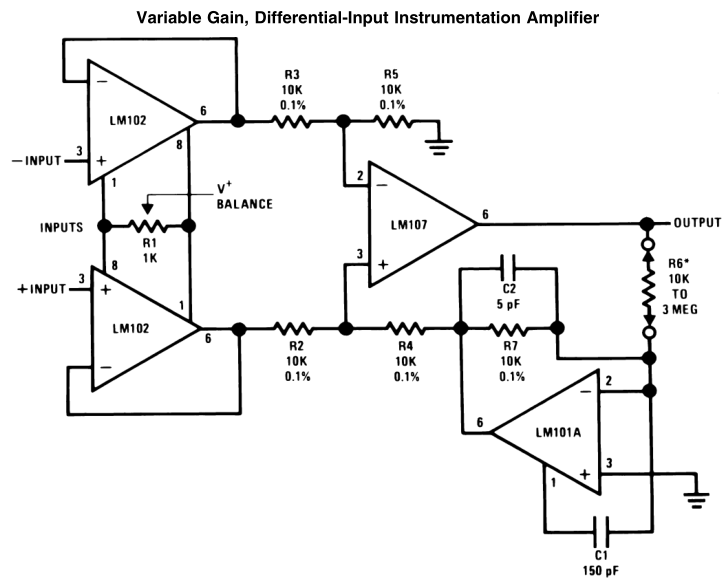After noticing that an attenuating diff amp followed by variable gain was ruining my SNR, I found this circuit from Application Note 31 that simulates with much better noise performance:
I built it (with different op-amps) and confirmed that the noise matched the simulation.
The example circuit would have overall variable gain from 0 dB (R6=10 kΩ) to +50 dB (R6=3 MΩ). However, when I build it, it oscillates at gains below +17 dB, and I don't understand stability theory enough to fix it. Does it require the external feedforward compensation of LM101A (Linear Brief 2) to be stable?
LM101A, LM102, and LM107 seem to all be old or obsolete. If this requires special external compensation op-amps, which modern replacements would you suggest?


